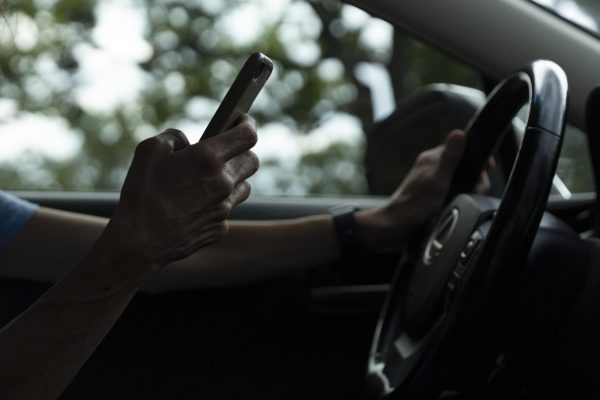OUPD strives to create a safe campus community
On a campus of over 18,000 students, it can be hard to imagine ensuring safety to every individual.
Over the past decade, threats at universities have made headlines, and while Oakland University has been fortunate to keep most dangers at bay, it does not come without great effort and personal responsibility.
OUPD Lieutenant Mel Gilroy believes that concentrating on preclusion is key to keeping it that way.
“We’re always focusing on prevention and deterrence,” said Gilroy. “… We’re never going to tell you that nothing can happen to you, but we can demonstrate this is a safe community.”
According to the Oakland University Police Department’s website, Oakland has one of the lowest crime rates in Oakland County.
Many students agree that Oakland’s campus is safe and at most times feel secure when attending classes.
“I do feel safe on campus, but it’s mostly because I’m not here during the night,” said freshman Nasihah Barlaskar. “All of my classes are in the daytime, and Auburn Hills is in general a safe city.”
In 2008, OU became one of 13 universities nation-wide to receive a federal grant called the Emergency Management for Higher Education, which was established to fund development and implementation of new programs for preventing and combating on-campus violence and other disasters.
Although guaranteed safety is unattainable, there are still numerous resources available for students to better protect themselves and their property while on campus.
Text Message Alert System
Introduced in the fall of 2008, the text message alert system allows students and faculty to register their phone number with OUPD to receive alerts about on-campus emergencies.
“The text message system is designed to quickly alert community members who are not sitting in front of a computer or desk phone,” said Oakland University Police Chief Samuel Lucido in a press release in August 2008, when the system was first implemented.
Sophomore Angelica Barich-Kwolek remembers the text messaging system being very convenient during prior emergency incidents.
“It was nice to be aware of what was going on instead of being clueless like most students. I was able to continue my normal routine because I had confidence it was being dealt with … it’s very helpful, so I really like it,” said Barich-Kwolek.
Senior Jim Sardelli II agreed.
“When there was a threat last year and everyone in the room got them (the text messages), we told the teacher even before she knew,” said Sardelli II.
To register, students should visit the Emergency Notification website at https://www2.oakland.edu/secure/grizzid/oualert/.
Reverse Text Messaging System
In addition to students being able to receive text alerts from OUPD it is now possible for them to send them as well.
By texting [email protected], students can send a text to OUPD dispatch if they are involved in, or are witnessing something that they are unable to or uncomfortable with discussing over the phone.
Emergency Loudspeaker System
Said to be the “latest in OU’s arsenal of mass communication to the community,” by OUPD Captain Mark Gordon, the Emergency Outdoor Loudspeaker system allows OUPD to activate one or many of the loudspeakers on the blue light emergency phones to alert the campus community.
“We can give out emergency information, guidance, or instructions, what we want people to do during the emergency, where we want them to go, or where we want them to avoid,” said Gordon.
Rape Aggression Defense Classes
Offered at OU since December 1998, RAD classes have now succeeded in teaching self-defense to roughly 2,000 women. The key to these classes, “simply put: empowerment,” said OUPD Sergeant Terry Ross. “RAD offers a toolbox of options for women to use should they find themselves in an abductive or assault situation.”
A combination of lecture and simulation, RAD is an international organization and the only course of its type endorsed by the International Association of Campus Law Enforcement Administrators.
Basic RAD openings are available for January and February. Students can register or get more information at http://www.police.oakland.edu/rad.
“Women leave the class with a new sense of awareness and confidence about their personal safety. We have heard from numerous past students’ success stories,” said Ross.
OUPD Escort Service
For students who stay late on campus, OUPD offers an escort service where an OUPD cadet or officer supervises a student walking to their car, dorm or apartment when they may feel less than comfortable.
“It comes back to crime prevention and deterrence,” said Gilroy. “You’re vulnerable when you are isolated and alone. We have always talked about safety in numbers.”
Students can call OUPD at 248-370-3331 and request an escort any time during fall and winter semesters.
Blue Light Phones
Prevalent around campus, OUPD’s blue light emergency phones first began to be installed in October 1994.
With a total of 13 phones now installed across campus, OUPD can field a call from a phone, gather information and respond to an emergency in as little as 90 seconds.
Placed in both high-traffic and dimly lit areas of campus the phones are easily accessible to students.
“The blue light poles are efficiently placed close by everywhere on campus,” said freshman Roberto Morales, who said he generally feels safe on campus.
In addition to the outlined programs, OUPD encourages students to report anything suspicious.
“Everyone has instincts to know what ‘normal’ looks like … we rely on the community to let us know what sticks out to them,” said Gordon.
For more tips on how to stay safe on campus, please visit http://www.police.oakland.edu/safety.







